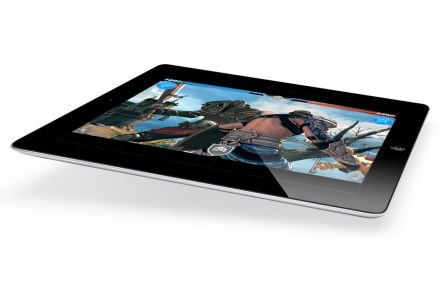Apple iPad Finally Gets Flash Video Workaround

Adobe has released a workaround that allows Flash-based video to be live-streamed to iOS devices
The news that Apple iPad and iPhone owners have long been waiting for has finally arrived, with Adobe announcing its new Flash Media Server (FMS) 4.5.
The announcement means that iOS devices will at last be able to play Flash video. This is because with Flash Media Server 4.5, Adobe has included support for Apple’s iOS mobile operating system, as well as QuickTime.
So how does it work? Well it seems that FMS 4.5 allows broadcasters to stream Flash-based video content in an Apple-derived format, HTTP Live Streaming (HLS), to iOS devices. It should be pointed out that only Flash video can be streamed to Apple devices, not Flash animations or games, or even adverts.
Flash Media Server 4.5 is available to download for free here.
Flash On Apple
The way FMS 4.5 works is that it automatically detects if the device displaying the content supports native Flash content. If it does not, as in Apple’s case, it converts the video to the necessary format to allow it to be viewed.
“Flash Media Server is an important part of a greater video solution to reach larger, more global audiences with technology providing consistency in a world of player and device fragmentation – this release marks a significant step forward to access more opportunities and to create these new experiences that entertain and engage audiences,” wrote Kevin Towes, senior product manager for Flash Media Server at Adobe in a blog posting.
“FMS4.5 extends online delivery, both through Adobe Flash Player and to the Apple device, with one simple broadcast workflow and offers a tremendous opportunity to create something really special,” he said.
He also said that FMS allows content providers to encode and deliver encrypted content to Flash and Apple devices using HTTP. He said that broadcasters such as the BBC have been actively testing HTTP delivery to Flash for events such as Wimbledon.
Hostile Steve Jobs
Of course this solution acts as something of a holding app for Apple users, until HTML5 is fully adopted. But there is little doubt that FMS is welcome news for Apple fans, as Steve Jobs has been consistently opposed to allowing Flash to run natively on Apple devices.
 Jobs reportedly called Adobe’s Flash a dying technology in a meeting with Wall Street Journal executives in February 2010, saying that it was buggy, a “CPU hog”, and an entry way for security issues.
Jobs reportedly called Adobe’s Flash a dying technology in a meeting with Wall Street Journal executives in February 2010, saying that it was buggy, a “CPU hog”, and an entry way for security issues.
In an open letter in April 2010, Jobs wrote that Adobe Flash is “the number one reason Macs crash”. Furthermore, he added, “We don’t want to reduce the reliability and security of our iPhones, iPods and iPads by adding Flash.”
Indeed, the issue has caused a lot of bad blood between the two companies in the past and, at one point, Adobe even threatened to sue Apple over the issue.
Apple Victory
Adobe’s frustrations were eloquently expressed by Lee Brimelow, an Adobe platform evangelist. In 2010, he wrote the following blunt advice for Apple on his personal website, The Flash Blog: “Speaking purely for myself, I would look to make it clear what is going through my mind at the moment. Go screw yourself Apple.”
However the decision by Adobe to opt to use HLS to stream content to Apple devices will be viewed in many quarters as a victory for Apple.
Up until now, Apple users who had been keen to view Flash video could have used an officially approved app, namely the Skyfire 2.0 app. This was released in early November 2010 and allowed Flash video to be played on the Apple iPhone, iPad and iPod Touch.
It worked when Apple users clicked on a page that contained Flash video, Skyfire’s servers downloaded, rendered and translated the video into HTML5. Skyfire then displayed a thumbnail that users could click on to stream the video from its servers.
However such was the overwhelming demand for the app, it became temporarily unavailable soon after it launched.